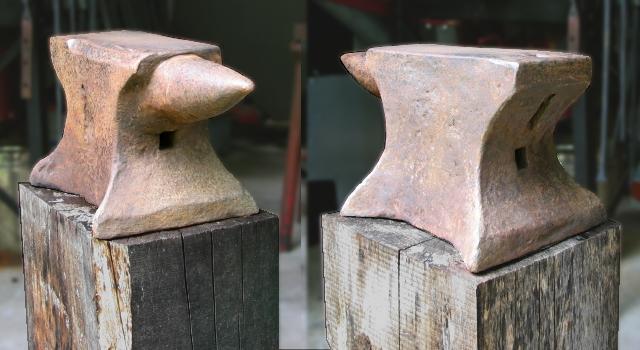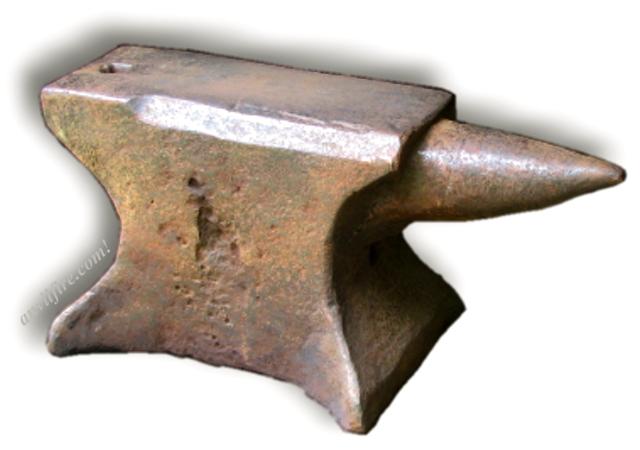Photos provided by Scott Smith.
"Colonial Anvils" derive their name from being from the Spanish and British Colonial period in the Americas.
Because the change in anvil design was so slow during this period it is difficult to date an anvil from the 1600's through early 1800's.
The only absolute dating on these anvils is clear precedence.
While some Spanish and French anvils were dated by the makers the British did not.
Early British anvils with dates were most likely marked by an owner and could signify anything
This anvil is definitely pre 1830 due to lack of a pritichel (small round punching) hole.
Its style could indicate being as early as 1700 but it is most likely from the late 1700's.

This is a very beautiful old anvil with very graceful lines.
The flare of the body over the horn is difficult to forge and is the mark of fine craftsmanship among the team of workers that made this anvil.
This anvil has had the far working edge ground off at a slope.
This is the edge that gets the most use when forging and is the most likely damaged area when strikers with sledges work at an anvil.
The sloped edge is no different than working on a German anvil and prevents further damage to the anvil.
Scott says,
"
I do know about 100 years of history on this anvil.
This anvil came from my Great-grandfather's farm and it was always in the horse barn just for a tool to beat anything on.
The "good" anvil was in the blacksmiths shop away from the other barns.
This anvil was just the one gathering dust on a work bench that my father played on as a boy and he just turned 87
"
This is a common story of many old anvils.
They were "out of style" and often replaced with newer anvils.
Not so long ago they were looked upon as just "old junk anvils" and could be bought for pennies a pound.
Today they are sought after collectors items.
The disadvantage of these old anvils is the lack of pritichel hole and the short horn and thick heal.
For making shoes as well as much architectural work the newer style anvils were better.
But for forging these old anvils had the mass in the right place and were equivalent to late type anvils twice their size.




 Return to Misc and Donated Anvils Index
Return to Misc and Donated Anvils Index Anvil Collections Gallery Index
Anvil Collections Gallery Index